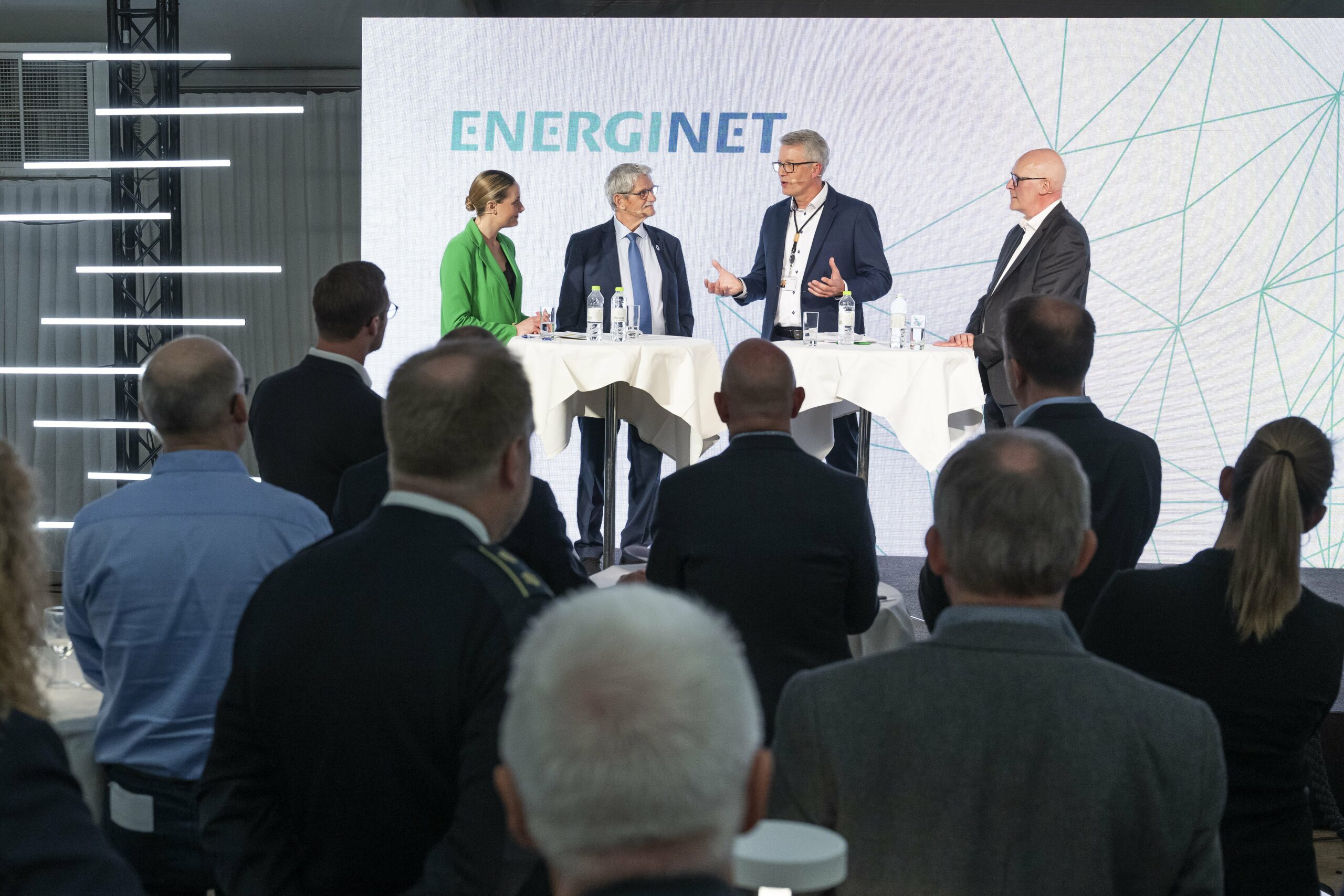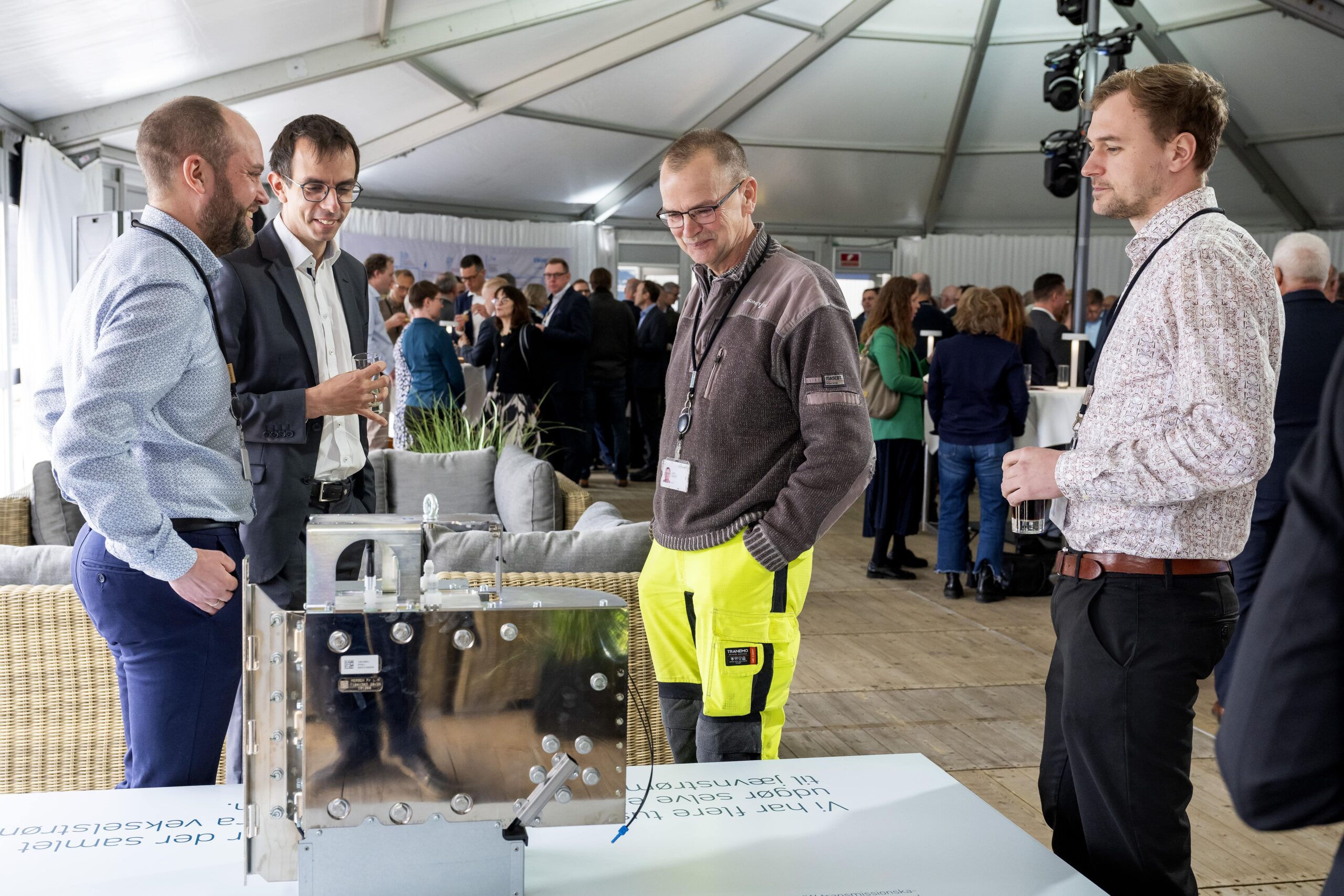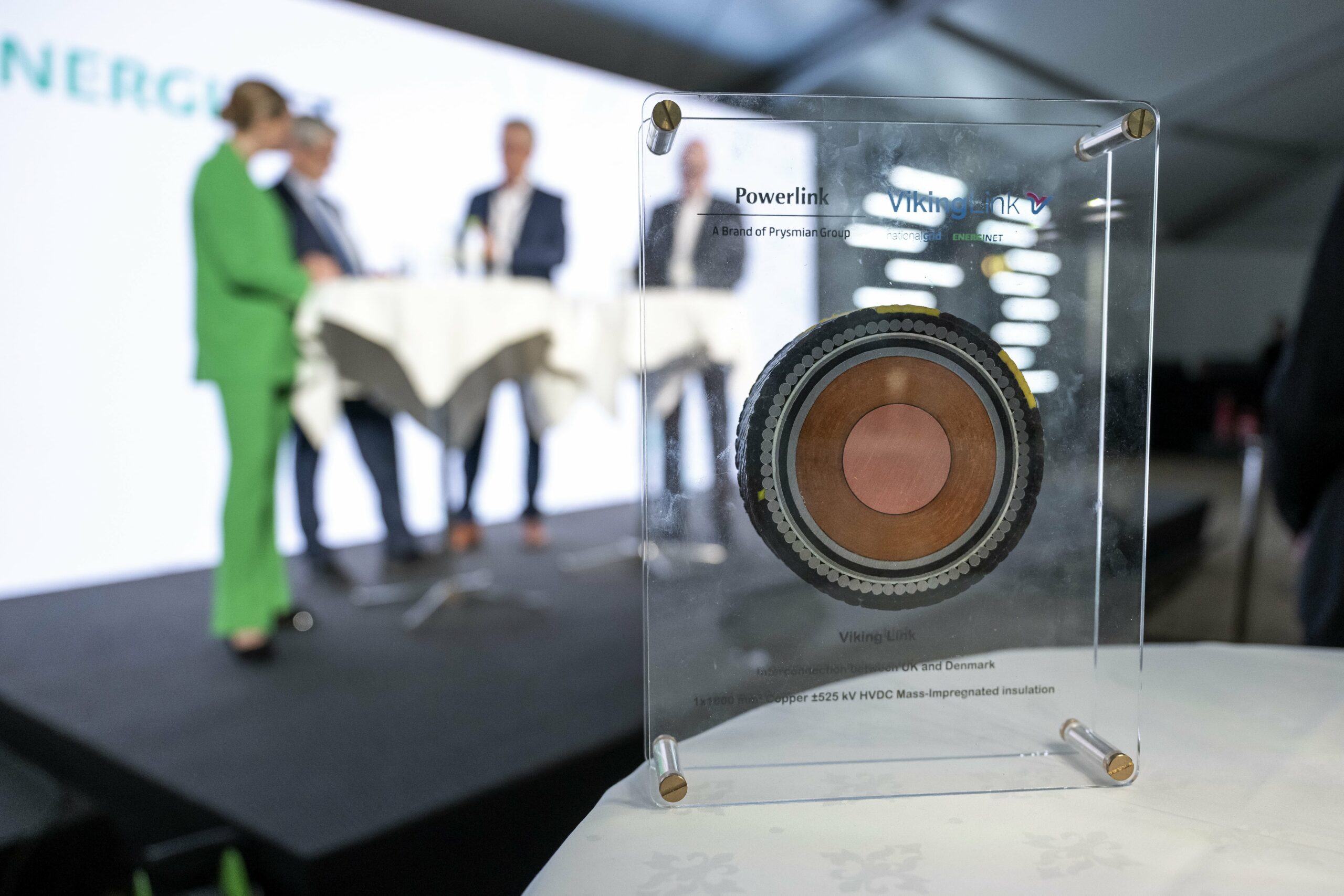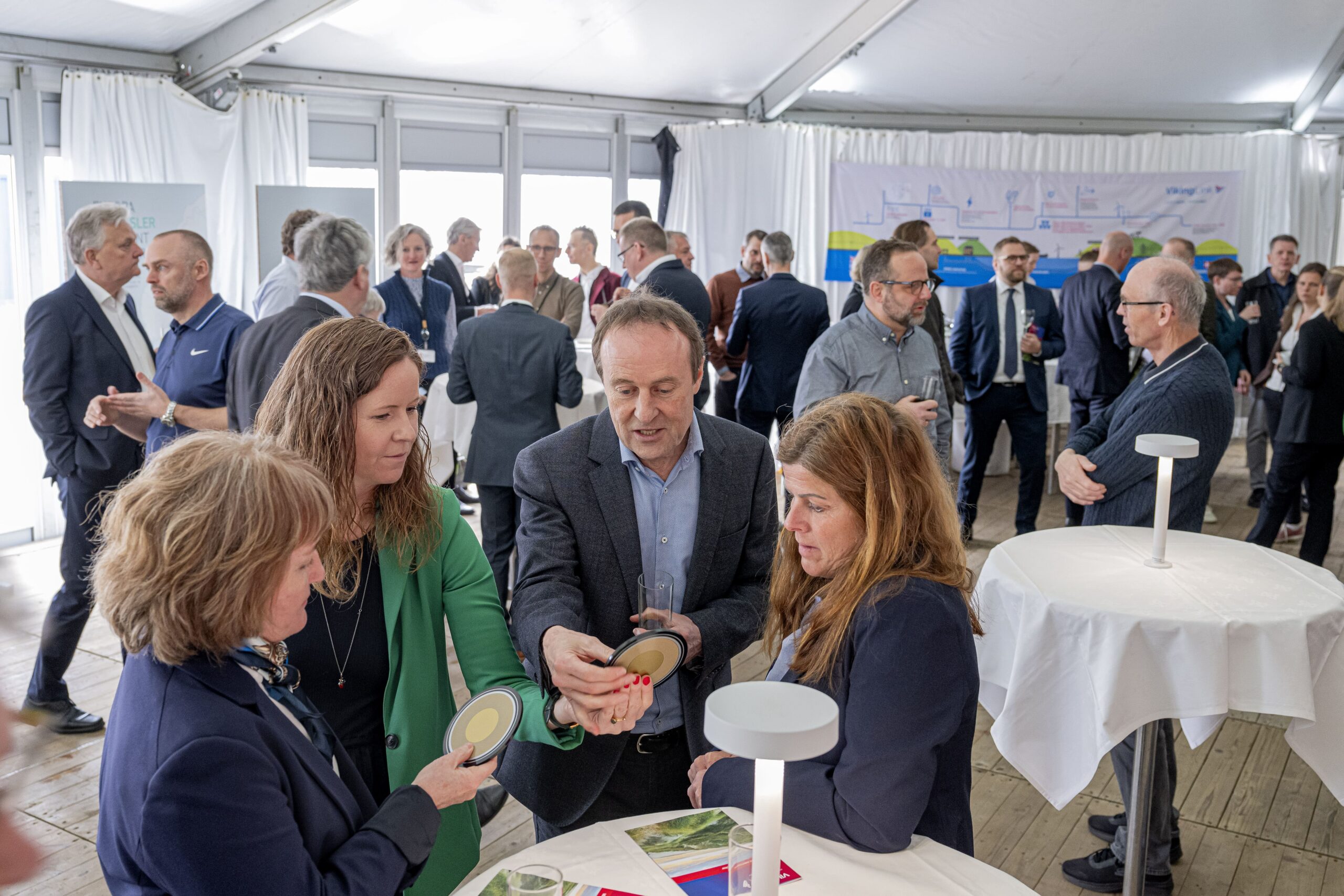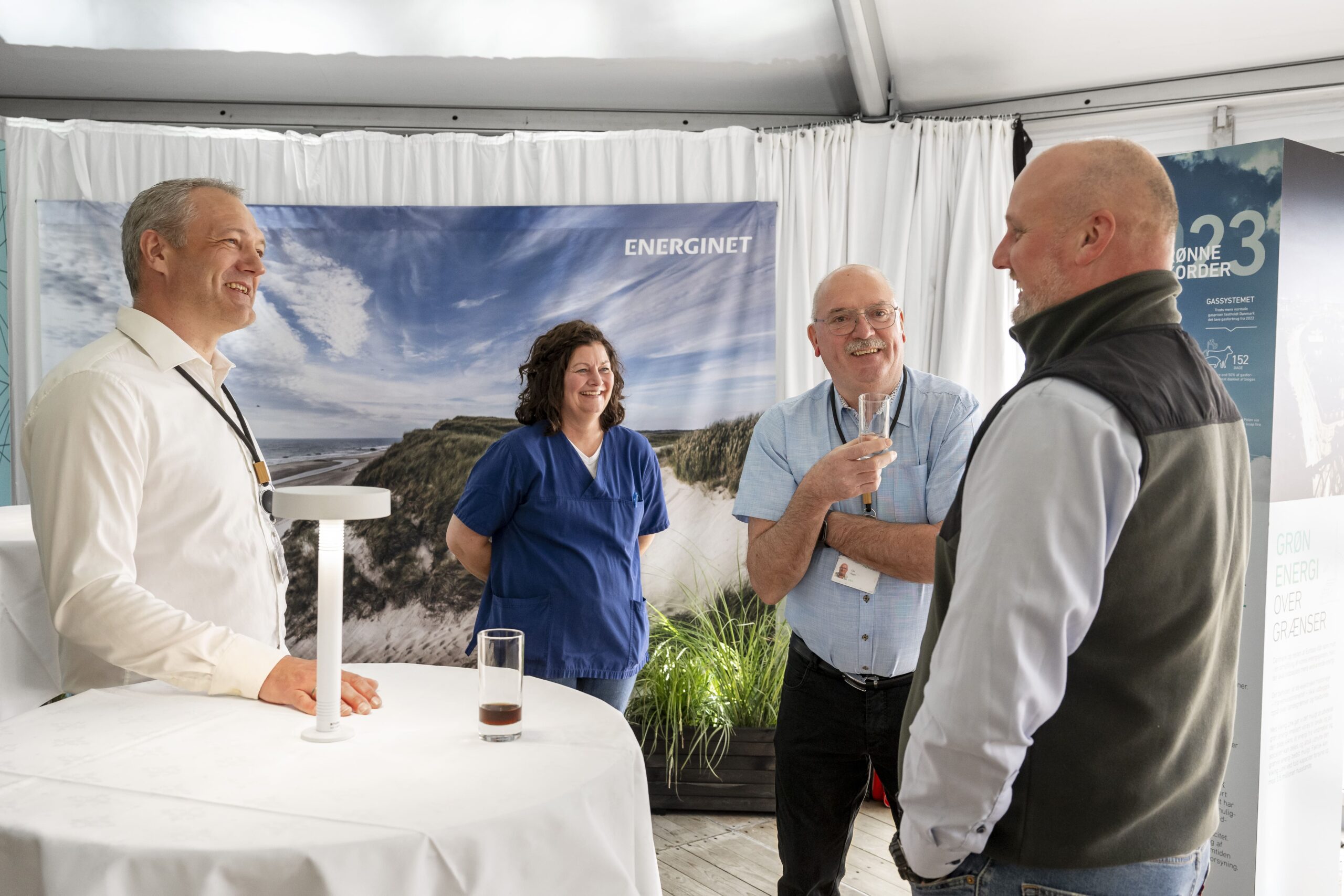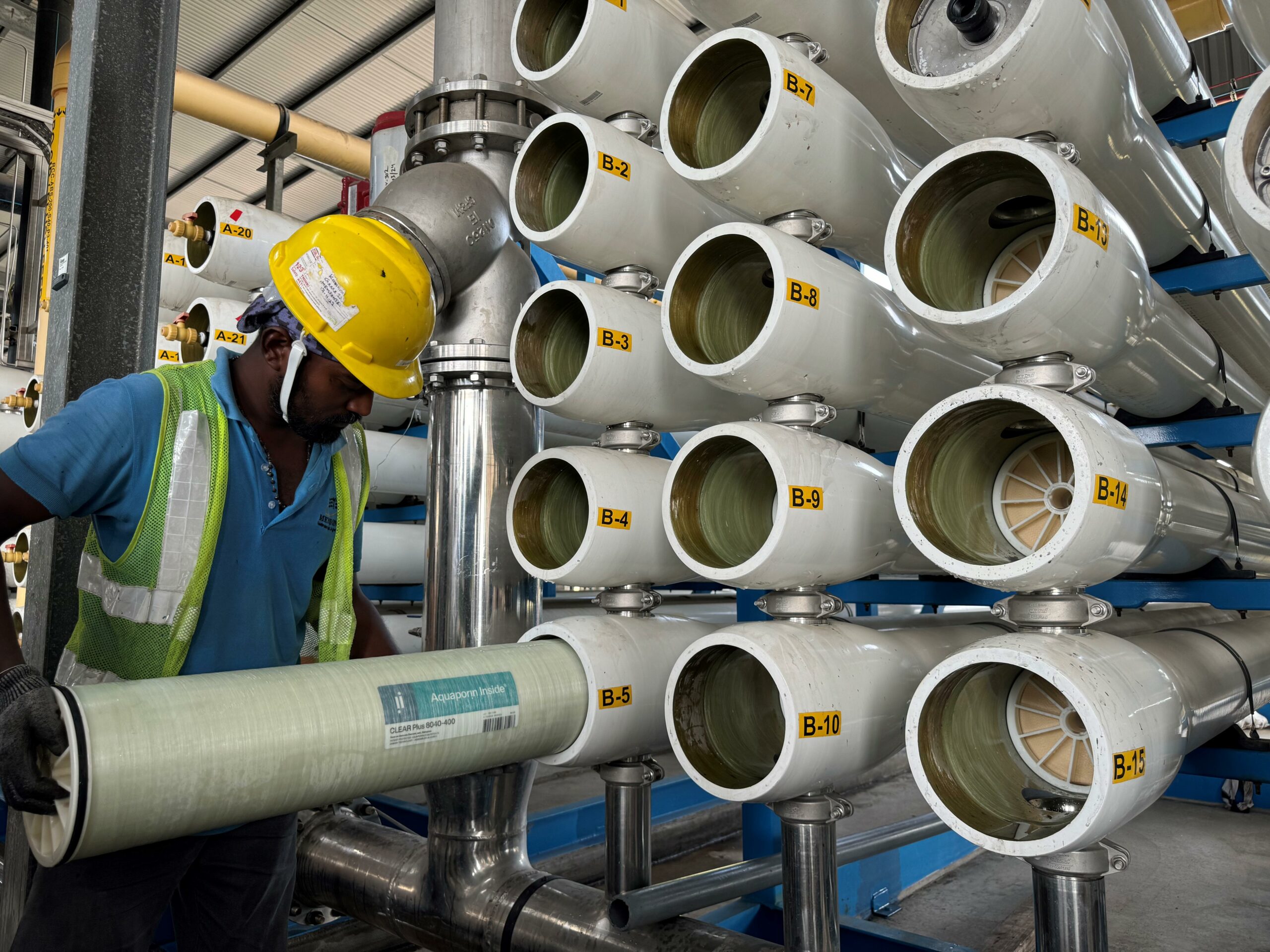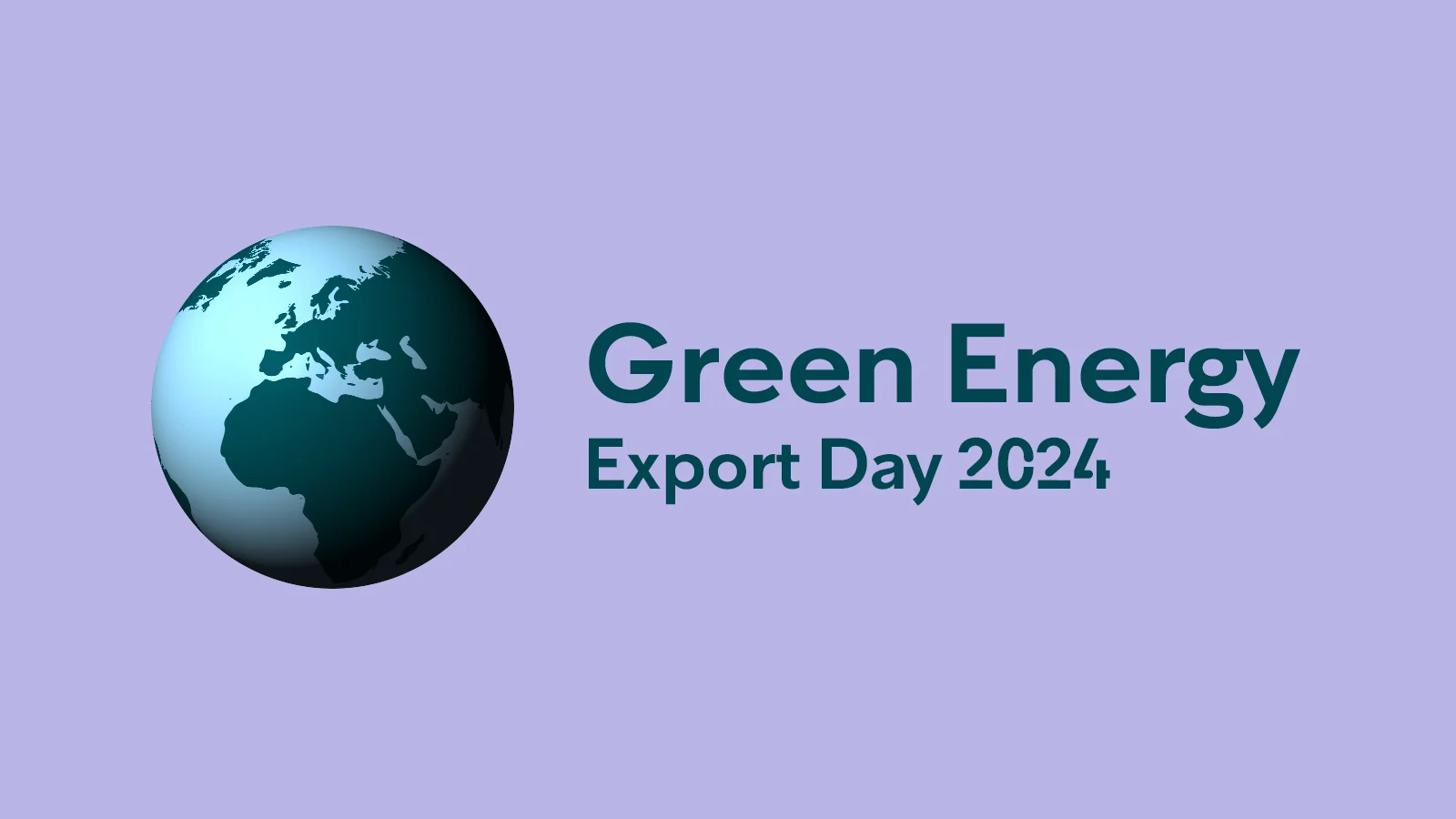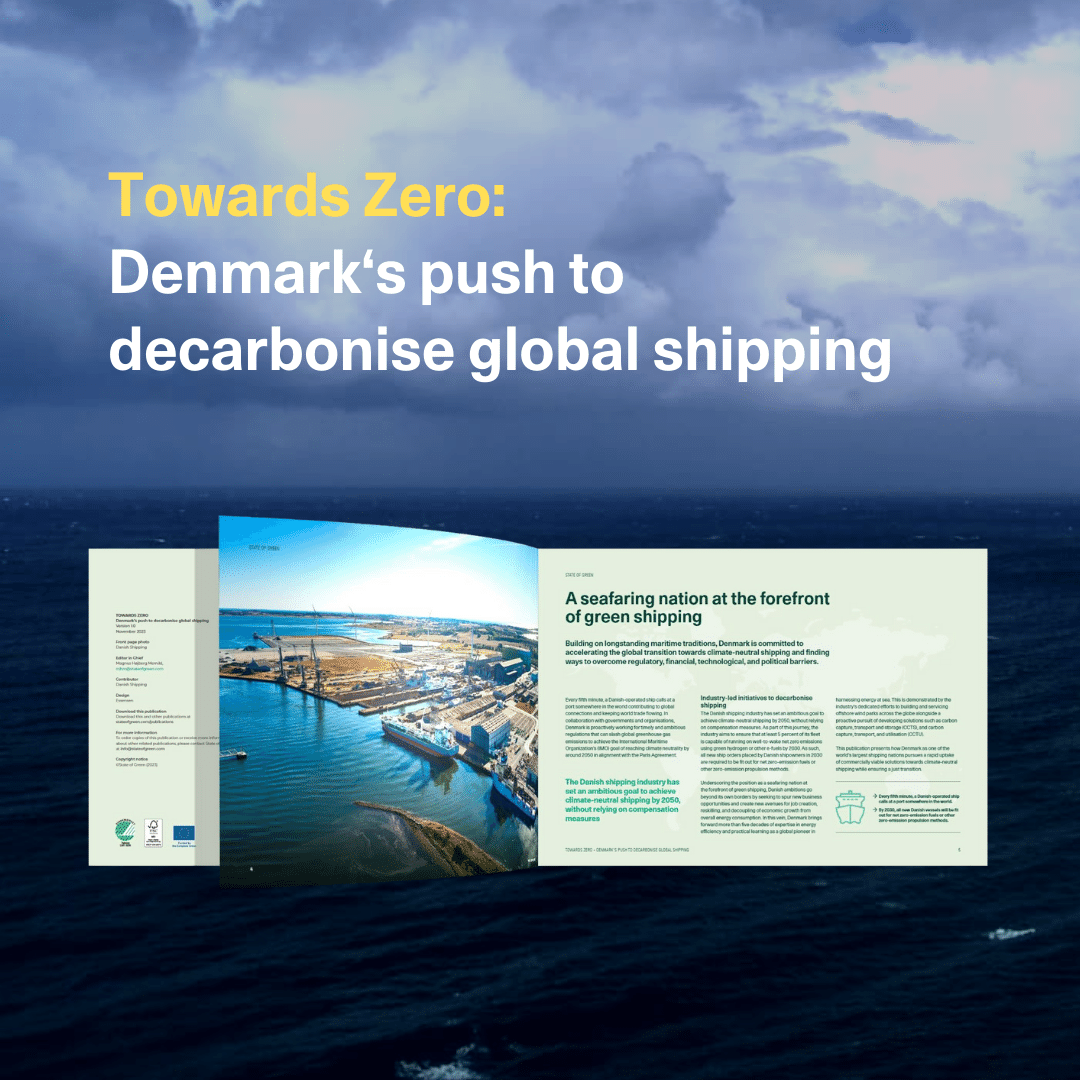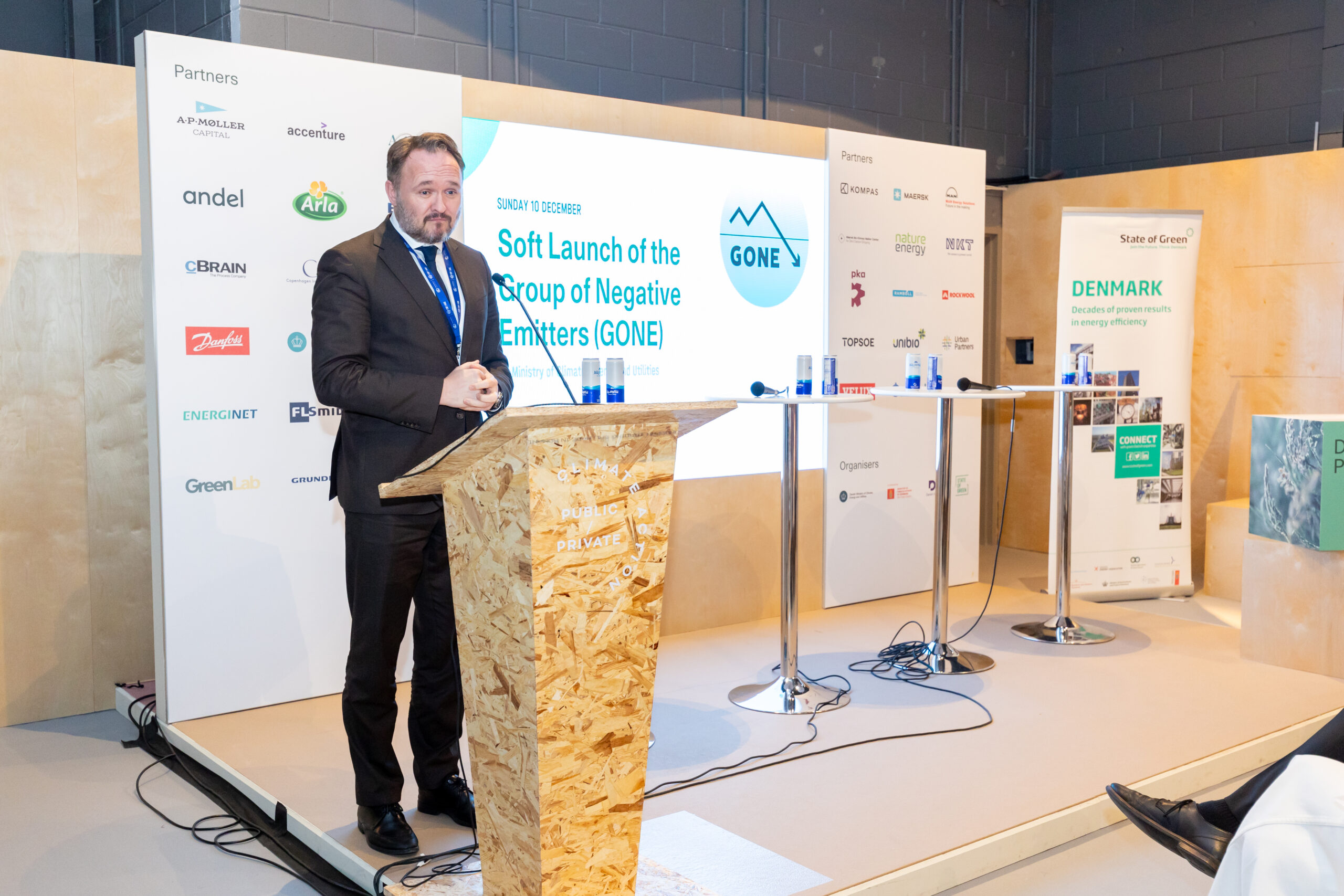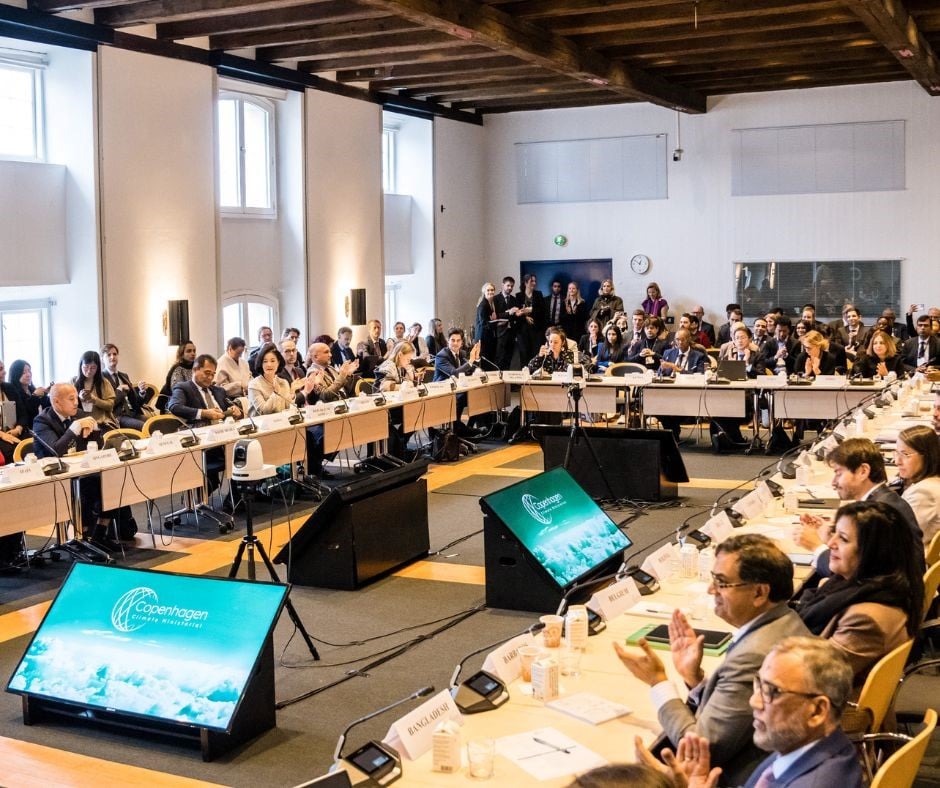A step towards an interconnected Europe
The Danish part of the inauguration on Thursday took place at Viking Link’s Danish “anchor,” the converter station in Revsing in Vejen Municipality. Here, Thomas Egebo greeted his British colleague, Katie Jackson from the partner company National Grid, via a direct video link, thanking her for the cooperation with Viking Link over the past 13 years. And after a short countdown and pressing the button, he declared Viking Link inaugurated – in the presence of around 150 invited neighbours and special guests.
“Creating an electricity connection between Denmark and England is in itself a huge achievement. But it has also been a long and tough journey to get here due to external reasons. Challenges such as Brexit, the corona pandemic, the Ukraine war, energy crisis, Suez Canal blockage, Rhine drought, raw material shortages, and delivery problems. All things that have affected the project along the way, and yet we finished on time, with a beautifully completed work. I am enormously proud of the work and approach that our project team has carried out, along with our partners and contractors, and I am really happy that we can now celebrate a job well done today.” Thomas Egebo, CEO of Energinet
Denmark already has electricity connections to Norway, Sweden, Germany, and the Netherlands. With Viking Link, Danish producers can sell and export electricity to yet another neighbouring country when it’s windy and sunny. Conversely, in Denmark, we can now also buy electricity when there is plenty on the other side of the North Sea. For instance, if a wind front from the west hits the United Kingdom a day before it hits the Danish wind turbines.
Discover the case: The Cobra Cable: unleashing green energy between the Netherlands and Denmark
Currently, Viking Link runs with limited capacity. But when the Danish electricity grid is fully ready to utilise Viking Link’s full capacity of 1400 MW in 2025, the connection will be the largest single component in the Danish electricity system.
In addition to utilising and transporting green electricity, Viking Link also provides a significant benefit for the climate: During its first year at full capacity, Viking Link is expected to save 600,000 tons of CO2, primarily in the United Kingdom. This is equivalent to removing 280,000 petrol or diesel-powered cars from English roads.



